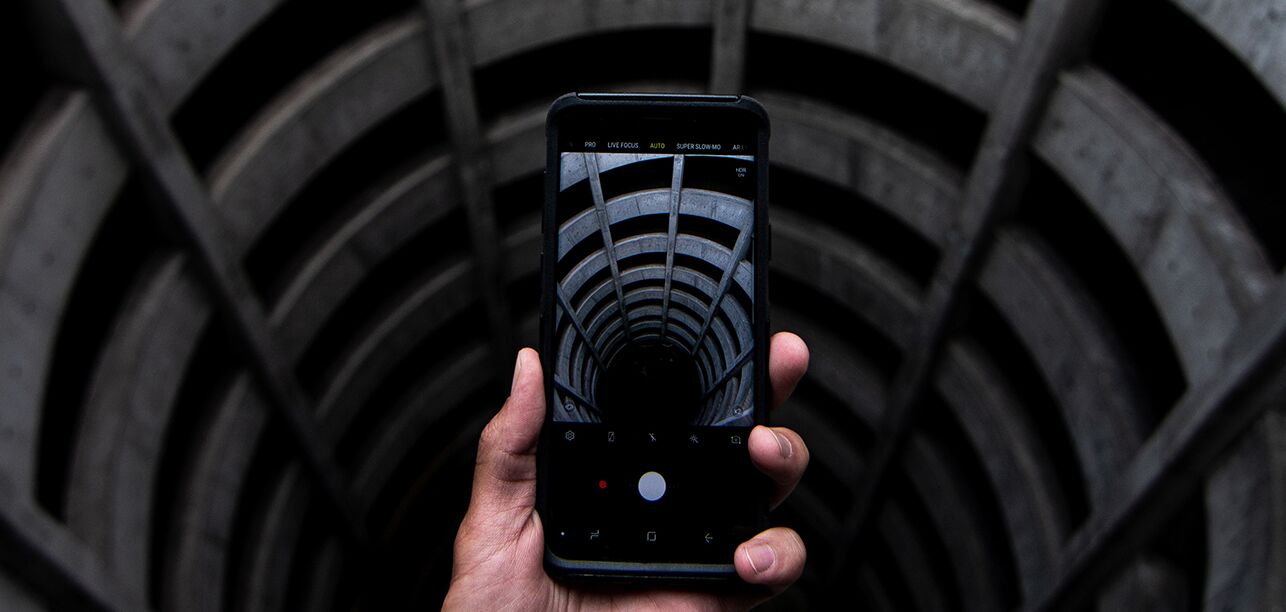
Remember Google Glass?
The much-hyped augmented reality product from the search engine company promised to revolutionize the way we interacted with the world. It didn’t quite pan out.
While most of the tech world labeled Google Glass a magnificent failure, the underlying technology highlighted the enormous potential of augmented reality.
What is Augmented Reality?
This technology superimposes a CG image on a user’s view of the real world. Unlike virtual reality, where everything a user sees is generated by a computer, augmented reality keeps the real-world focus, but just adds elements that aren’t really there to enhance the user’s experience.
This application has been used everywhere from the healthcare tech industry to retail and even manufacturing—Google is reintroducing Google Glass as an augmented reality tool for the workforce.
A few innovative professionals are now even using augmented reality in their business cards.
#AugmentedReality business card using #ArgonJS. @MikeQuindazzi Hashtags #ar #vr #smartphones #mobileapps #iot Link https://t.co/W0V7JPq4dm pic.twitter.com/YD51O9UUvf
— Mike Quindazzi ✨ (@MikeQuindazzi) April 12, 2018
Pretty cool, right?
Best Current Examples of Augmented Reality
The potential of augmented reality is endless.
It’s only a matter of time before this technology becomes a part of our everyday lives. We’re not quite there yet, but a few companies and organizations are making great strides with this technology today.
Here are seven of the best examples of augmented reality technology we’ve seen to date.
IKEA Mobile App
Aside from furniture with fun names that you need to assemble yourself and cheap Swedish meatballs, IKEA is also known in the tech world as one of the first companies to use augmented reality well.
The retailer began experimenting with augmented reality back in 2012, when shoppers could use the app to see how tables and shelves would look in various places around your house. IKEA is taking it a step further with its IKEA Place app, which now allows you select anything from the store’s catalog and see how it will look to scale anywhere in your house.
This is an extremely helpful tool for people who are wondering if a certain piece of furniture will fit in a tight space, or if the color of their prospective purchase will match the motif of the room.
Nintendo’s Pokémon Go App
You really can’t have an augmented reality conversation without mentioning Nintendo’s Pokémon Go app.
The smash hit of 2016, Pokémon Go allowed users to catch their favorite Pokémon by looking through their phones at the real world – but with superimposed images.
The game was an overwhelming success, with up to 65 million users at the peak of its popularity. It was probably also the reason you noticed scores of teens and young adults wandering around your neighborhood staring at their phones the whole time.
Google Pixel’s Star Wars Stickers
If you saw “Stars Wars: The Last Jedi” in theaters – or watched TV at all this past December – you probably saw this commercial:
Using the same basic idea as Pokémon Go, Google added a feature to the camera of its Pixel phones that allowed users to input AR stickers into pictures and videos. If you had a friend with a Google phone, you probably received at least one photo of a random Stormtrooper.
Disney Coloring Book
A few years ago, Disney created a unique way for children to see their favorite characters in 3D using augmented reality.
The research team developed technology using AR that would project colored images from a coloring book into 3D renderings using a mobile phone or tablet. This technology is still in its infancy and has not yet been released to the public, but this could usher in a whole new way for children to explore and play with their imagination.
L’Oréal Makeup App
Similar to the idea behind IKEA’s app, beauty company L’Oréal has a mobile app that will allow users to try out various types of makeup.
Think of it like a Snapchat filter. The app identifies your face and then will virtually show you what you would look like with a certain shade or color of a specific product.
Weather Channel Studio Effects
Television news has been using special effects to enhance its program quality for years. For example, weathermen have been standing in front of green screens for years that appear as maps to viewers to deliver their weather forecasts.
The Weather Channel is now taking technology one step further to illustrate extreme weather and its effects. Over the past several years, the broadcast company has used augmented reality to display a 3D tornado on set, show the height of flooding during storm surge and hurricanes and just recently drove a virtual car through the studio to show how vehicles lose control on snowy or icy roads.
Expect news, weather and sports programming to continue experimenting with augmented reality as a way to improve the television experience for viewers.
U.S. Army
Not all examples of augmented reality are fun and games.
The United States Army is experimenting with augmented reality programs to be used in combat that would help soldiers distinguish between enemies and friendly troops, as well as improve night vision.
This technology is still in development and may be years away from deployment, but military officials say this innovation would improve combat efficiency and help save lives.
The Infrastructure Needed to Run Augmented Reality
As you might expect, running an effective augmented reality program involves lots of data and a high-performing infrastructure. Any lag or delay in augmented reality programs would defeat the purpose of using the technology and leave the end user with a far less than optimal experience.
INAP’s data center and infrastructure services provide the necessary solutions you will need to power your augmented reality applications. Whether you are looking for colocation, managed or network services, or hope to run your servers in the cloud, our specialists can help find the right solutions your business requires.
Contact us today to speak with an INAP specialist about your specific business needs.



